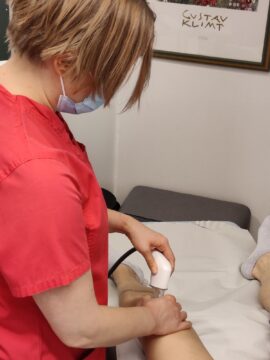A normal scar behaves like other soft tissues; its layers move relative to each other and adapt to the body’s movement.
Sometimes, an excessive amount of scar tissue may form, for example, due to prolonged inflammation or continuous tissue tension, resulting in a thick and inflexible scar.
Scarring can also lead to adhesions between multiple tissues, which interferes with normal mobility. In such cases, the movement, elasticity, and gliding of the scar tissue and surrounding tissues may be impaired. Tight scar tissue often leads to pain conditions – sometimes localized pain, and often referred pain elsewhere in the body.
Scar treatment using various physiotherapy methods

The tissue condition of the scar can be normalized after the acute phase by ensuring that the area is not subjected to excessive stretching from surrounding tissues and that no excessive swelling accumulates. Common treatments include fascial manipulation, lymphatic therapy, or acupuncture.
Even old scars are worth treating—in such cases, treatment targets not only the scar itself but also any functional impairments in the body that may have resulted from the scar or adhesions.
Silicone materials and moisturizing are used to maintain surface elasticity. In the treatment of larger areas, such as in burn patients, tissue conditions in the scar area can also be improved with compression garment therapy.
At Orton, we also use the LymphaTouch device in scar treatment.
Indications for scar treatment
- Post-surgical scar treatment helps the healing tissue return as close as possible to its original condition.
- Burn scar treatment
- Treatment of adhesions and surrounding tissues in old scars improves body dysfunctions such as pain, swelling, or movement restriction.
How to proceed with examinations or treatment?
Inquire about treatment or book an appointment by phone at 09 4748 2705 or through online booking.

